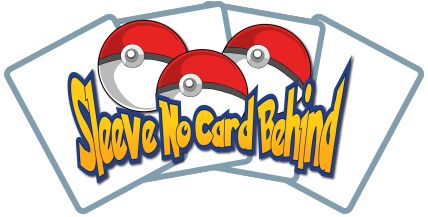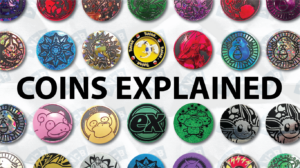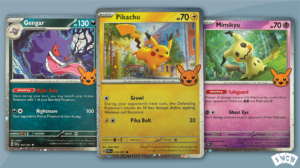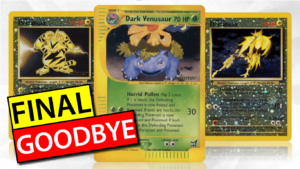-
By: Oliver Copeland
- Published:
- Last Updated: December 3, 2023
There is a fine line between lightly played and near mint when determining card condition. More often than not, you’ll receive a card in the mail to find it in slightly worse shape than you expected. This sucks, so if you’re selling a card, you don’t want to make the same mistake.
Who’s Guidelines Are Best For Card Condition?
Every marketplace out there has its own condition chart, stating in detail how they differentiate between LP, NM, and others.
Many of them have different qualifiers, and this can be cool fusing for the buyer. Even some eBay sellers have posted their own condition guidelines, but they are often slightly different from each other.
Here are some commonly used condition guidelines:
As you can see, each guide is very similar but not identical. In the next section, we will split the hairs between lightly played and near-mint conditions.
Lightly Played Vs. Near Mint
The low end of near mint and the high end of lightly played are essentially one and the same, so if you’re a potential buyer, expect some grey area.
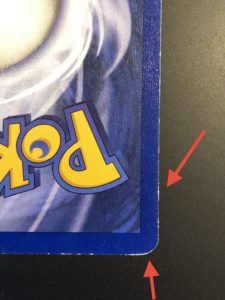
The most important note is that near mint can have a few imperfections. A card doesn’t have to be absolutely flawless to be considered near mint. On the other hand, too many of these slight flaws will result in a downgrade to lightly played.
According to two of three of our reference guides, a near-mint card is allowed to have:
- Slight edgewear
- Slight scuffing
- Slight defects
- Minor scratches
- Slight indentation
But the near-mint card cannot have:
- Surface wear
- Bends
- Damage
- Creases
- Dirt
- Wrinkles
- Stains
- Multiple damaged corners
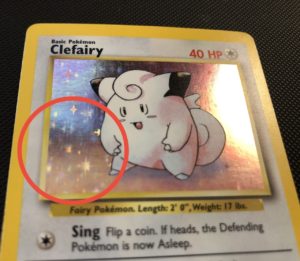
Remember, anything from a graded PSA 7 and up, is considered near mint. It’s often forgotten that grades other than 10 can be near mint, but they are.
Lightly Played Vs. Near Mint (For Buyers)
It’s not uncommon for a seller to drop a card from near mint to lightly played just for the sake of customer appreciation. Sometimes the near-mint price is only a dollar or a few cents above lightly played, so they’ll just mark it down to lightly played.
This means that the buyer is pleasantly surprised when they receive a card in near-mint condition, and the seller gets fewer customer complaints.
If you’re buying a card and don’t have pictures to look at, check the website’s condition guidelines, and familiarize yourself with the return policy.
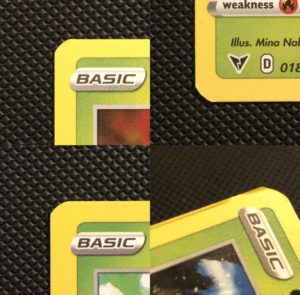
Lightly Played Vs. Near Mint (For Sellers)
As mentioned in the previous section, it’s common to drop the grade down from near mint to lightly played if the price is negligible. This ensures a happy customer and fewer complaints.
But sometimes the card’s value can double from lightly played to near mint, and this is when things can get hairy.
A customer is going to be upset if they feel like they did not get their money’s worth. You’ll receive a complaint, a refund request, or even negative feedback. This is the worst-case scenario for a card seller.
Make sure you use the marketplaces condition guidelines and be prepared for this scenario because it will eventually happen if you’re selling a lot of cards. If you follow the condition guidelines carefully, you’ll always have them to fall back on.
Advantages Of Buying Near Mint Cards
There are a handful of reasons why you might want to consider purchasing near-mint trading cards instead of lightly played ones:
1. Collectibility: Near-mint cards are generally more collectible than lightly played ones, particularly for rarer or more valuable cards. Collectors often prefer cards in near-mint condition as they look better in a collection and can potentially increase in value over time.
2. Resale Value: If you ever plan on selling your cards in the future, near-mint cards will generally have a higher resale value than lightly played ones. This is because many buyers prefer cards in better condition and are willing to pay more for them.
3. For Display: Near-mint cards typically have sharper corners, cleaner edges, and a more vibrant color than lightly played cards. This can make them more visually appealing and enjoyable to look at, especially if you plan on displaying them or using them in a deck where their appearance matters. In contrast, lightly played cards may have minor wear and tear that can detract from their overall appearance, making them less visually impressive.
That being said, if you are primarily interested in playing with your cards and don’t place a high value on their collectibility or resale value, then lightly played cards may be just as good for your purposes. Ultimately, the decision of whether to purchase near-mint or lightly played cards depends on your personal preferences and priorities.
Advantages Of Buying Lightly Played Cards
1. Cost: Lightly played cards are often less expensive than near-mint ones. This is because near-mint cards are generally considered to be in better condition and are more highly valued by collectors, which drives up their prices. If you are on a tight budget or simply don’t want to spend a lot of money on trading cards, lightly played cards can be a good option as they offer similar gameplay value at a lower cost.
2. Playability: If you plan on using your cards for gameplay rather than collecting or resale, lightly played cards may be just as good as near-mint ones. As long as the card is not significantly damaged, such as having a crease or a tear, it should function just as well as a near-mint card in gameplay. In fact, some players even prefer lightly played cards as they are less slippery and easier to shuffle due to their slight wear and tear.
3. Availability: Depending on the card and the set it is from lightly played cards may be more readily available than near-mint ones. This is because near-mint cards are often more highly sought after by collectors, who may be willing to pay a premium to obtain them. As a result, lightly played cards may be more abundant and easier to find, particularly for older or rarer cards where near-mint copies may be scarce.
Conclusion
With all these factors to consider, the decision is ultimately yours. Sometimes, you just have to take a gamble on the lightly played card. At the end of the day, the guidelines are in place to protect both the buyer and the seller. If there are any disputes, the conditioning guidelines will be brought forth.
It is important to familiarize yourself with the proper guidelines and best practices.

Hi, I'm Oliver. I've been collecting Pokémon cards for 25+ years. I hope you enjoyed your read and learned something. Learn more about me on the About page.
